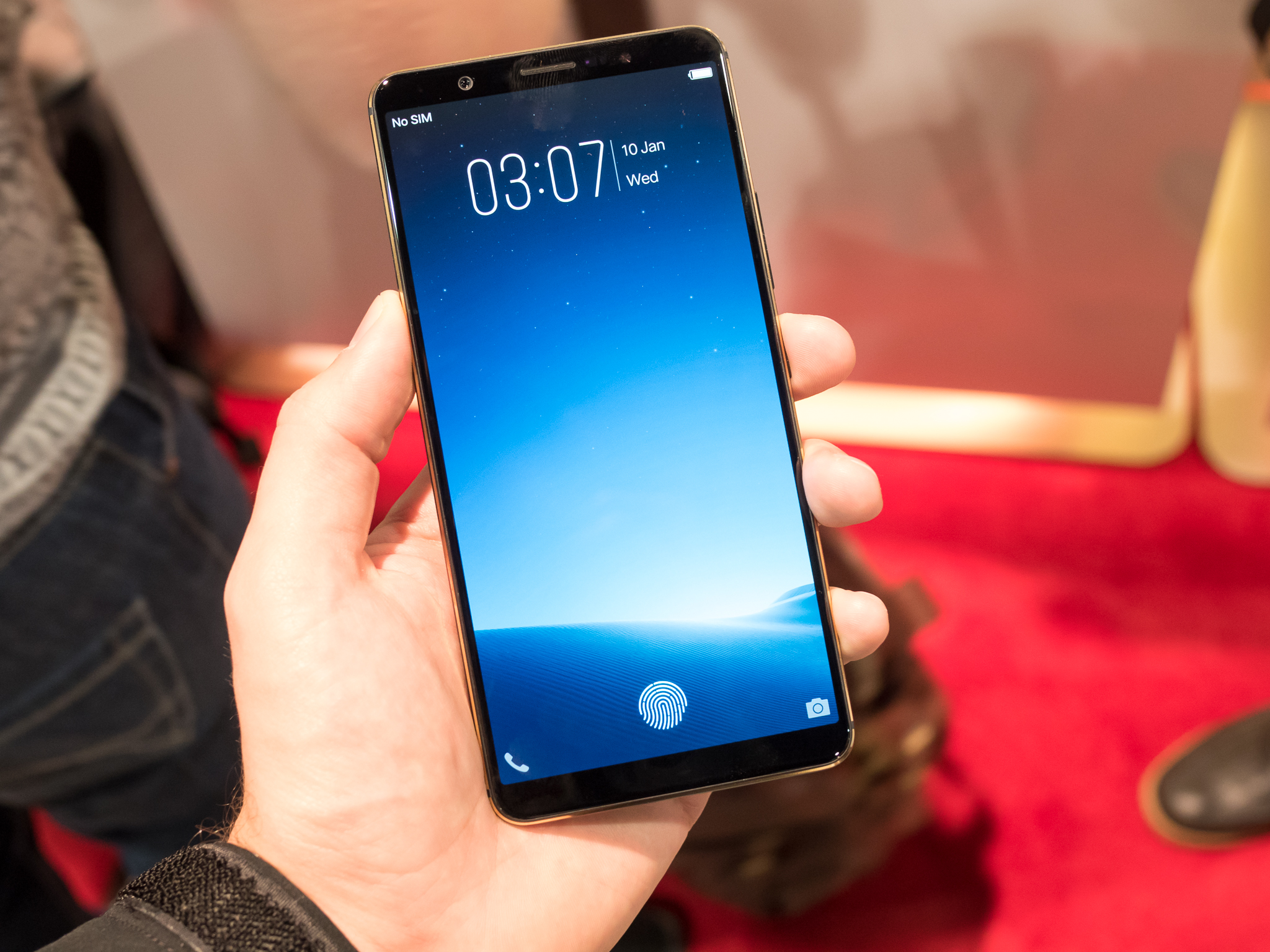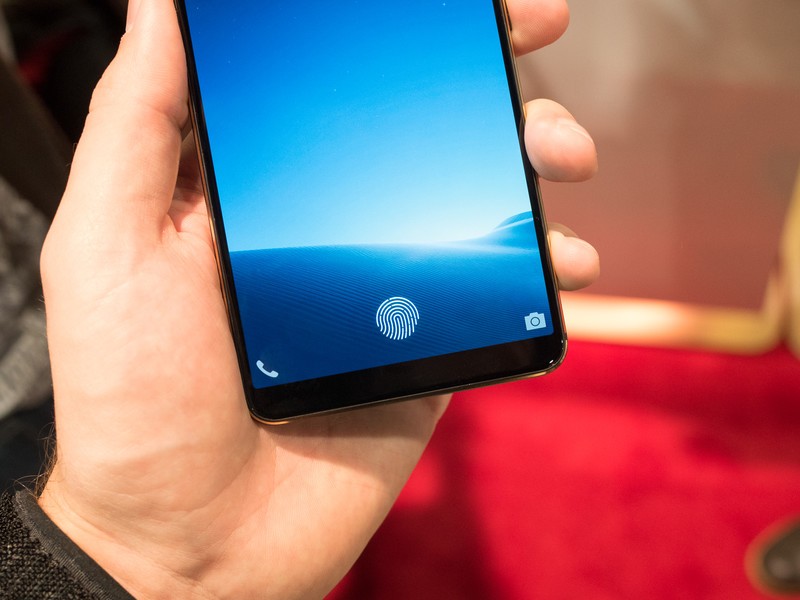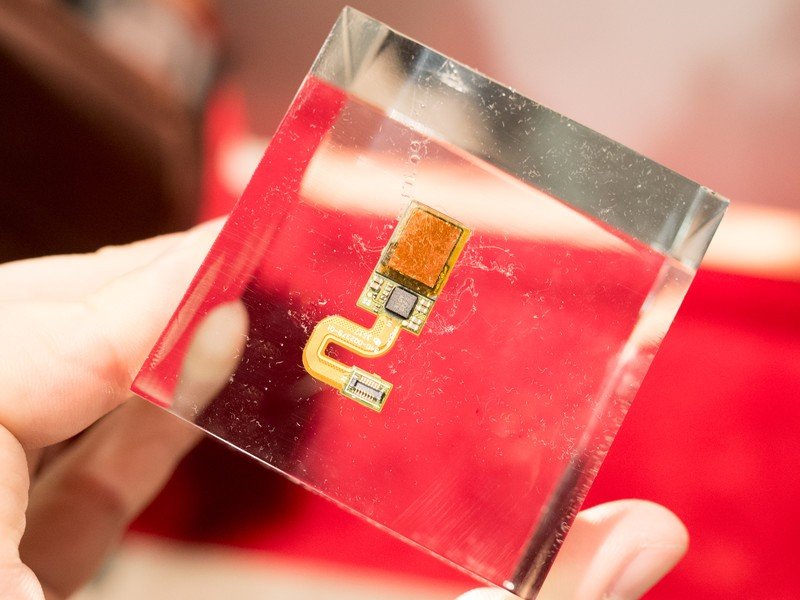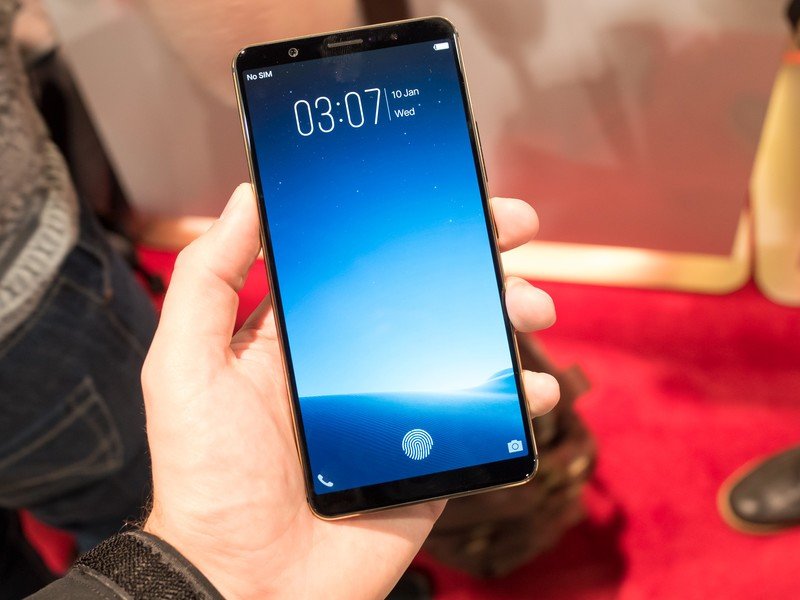Vivo's in-display fingerprint sensor shows the future of smartphone biometrics

Phones are getting thinner and display bezels are getting smaller, so any time a company can save space in a phone it's going to do it. The latest way to save space and give companies flexibility has been created by Synaptics, with its new in-display fingerprint solution.
The first company to use the new fingerprint sensor tech is Vivo, and I had an opportunity to use this awesome new sensor in one of its phones at CES 2018.
The in-display fingerprint sensor, as a standalone component, doesn't look much different than any other capacitive style sensor. All it needs is a small contact point with the main board of the phone, and then companies are free to place the sensor anywhere they want. In Vivo's case, it's dead center near the bottom of the display, which is the easiest place to reach with either thumb when holding the phone.
This is the future of fingerprint sensors in smartphones.
This is an optical sensor rather than the capacitive type we're used to seeing on most phones. It's for this reason that the sensor only works with OLED displays (at least right now) — when the sensor is turned on, the display illuminates just the pixels coinciding with the sensor, shining light up to your fingerprint to then be recognized.
If you have the display turned off and tilt the phone ever-so-carefully at an angle you can see the sensor placed under the display, but it's completely undetectable when the display is turned on. It's up to the phone maker to handle the software side of things in terms of the on-screen prompt for your fingerprint, but the great part about this sensor is that it's only enabled when the phone needs it.



Synaptics is quoting a 0.7-second response time for authentication, which is technically slower than the best capacitive sensors out there that quote 0.2-seconds. In my testing it felt pretty speedy, but you could notice the small speed difference sometimes. The thing that's hampering the speed, for me, is that it requires a bit of pressure from your finger in order to flatten out your fingerprint and be properly read by the sensor. That's more of a mental roadblock, though, and I feel it won't take long to retrain yourself to press it properly.
Vivo says that this is a full-production device that will be released, but it doesn't have a time frame for it just yet. In fact, it doesn't even have a brand name for the phone yet. Synaptics is undoubtedly making this same sensor available to other smartphone makers as well, so we could see this tech in dozens of phones in 2018.
Get the latest news from Android Central, your trusted companion in the world of Android
Andrew was an Executive Editor, U.S. at Android Central between 2012 and 2020.


